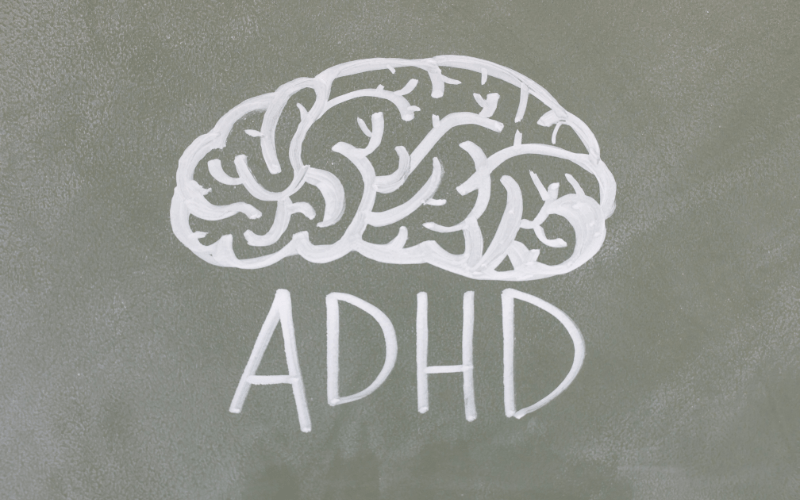Part 1 with Myths 1 and 2 of this post can be found in Myth Busters Part 1
Myth Busters: Myths Standing Between EMDR Practitioners and their Autistic and ADHD Clients | Part 2
Guest Blog Post by Erin Wheeler, LCSW, PMH-C, Skylar Ibarra, LCSW, PMH-C, and Jane Kosloff, LICSW, PMH-C
In recent years, the neurodiversity paradigm has offered a transformative lens for understanding and supporting neurodivergent individuals, encouraging practitioners to rethink long-standing assumptions and approaches. This evolving discourse regarding neurodiversity, especially around ADHD and autism, has widened the interest and curiosity of EMDR practitioners in learning how to provide effective and affirming EMDR.
Part One of this article examines two of four common myths around the intersections of ADHD, autism, and EMDR therapy. By deconstructing myths and offering potential paths forward, the authors of this article hope to enhance the EMDR community’s foundational knowledge around neuro-affirming care and shared best practices, allowing for neuro-affirming EMDR therapy to become more accessible for all of our client populations.
To help dispel common myths and misconceptions, this article reviews recent research findings which often mirror observations seen within neurodivergent communities. Although this article highlights many findings derived from traditional research, all three authors share the belief that research data is not inherently more important than lived experience perspectives. This reflects the principle of centering lived experience from the neurodiversity paradigm.
***Notes on language: This article will use identity-first language—such as “autistic person” instead of “person with autism” and “ADHDer” instead of “person with ADHD.” Identity-first language reflects the preferences of many within the autistic and ADHD communities, who view their neurodivergence as an integral part of their identity rather than something separate. That being said, it is important always to honor how a client personally identifies. A community consensus is not more important than individual preference. When speaking in general terms though, this article will use identity-first language.
This article will also not be spelling out the full acronym for ADHD. This decision also aligns with the neurodiversity paradigm, which challenges the notion of ADHD as a “disorder.” These choices in language aim to model the shift toward neuro-affirming practices and set the stage for a deeper discussion on how EMDR practitioners can better meet the needs of neurodivergent clients.
Myth # 3: EMDR should target ADHD and autistic traits directly
A common misconception within the EMDR community is that EMDR should directly “target” ADHD and autistic traits, such as executive functioning difficulties or challenges with social acceptance. On the surface, such logic might seem sound. If EMDR often increases the capacity to regulate cognitively, emotionally, and somatically, then why not apply this modality to support such goals for autistic and ADHDer clients?
Yet, the belief that EMDR should target traits directly is problematic in two key ways. First, it distorts the purpose of EMDR therapy. As Francine Shapiro (2018, pg. 12) explained, EMDR is intended “to rapidly metabolize the dysfunctional residue from the past and transform it into something useful.” EMDR is designed to process and clear the impact of trauma, not to alter intrinsic traits, just as it wouldn’t be used to correct color blindness. The focus should be on trauma-related symptoms, not intrinsic neurodivergent characteristics.
Second, this myth can cause harm by reinforcing ableism. If EMDR therapy conceptualizes the “healed” person as neurotypical, it pits ADHD and autistic clients’ intrinsic traits—and their self-wisdom—against the idea of EMDR success. Clinicians may unintentionally reinforce the notion that neurodivergent traits are “pathogenic” and that EMDR’s goal is to make clients behave, think, or regulate emotions in neurotypical ways. Rather than acknowledging and embracing neurodivergent ways of thinking, this approach may inadvertently overlook these differences, framing them as issues to be corrected. This can create distance in the therapeutic relationship and, in some cases, reinforce societal biases, potentially contributing to the client’s distress. Take this case example based on a real client’s report of working with a prior therapist:
- The autistic client expresses to their therapist that passionately sharing their deep interests continues to lead to rejection and exclusion in social situations. Their therapist, holding the above-mentioned myth, responded with feedback framing such experiences as the attachment cry of a traumatized preverbal part. They suggested to their client that targeting such memories of exclusion and rejection through EMDR would lead to an enhanced capacity to stay in connection due to less reliance on behaviors stemming from this deep attachment insecurity. While the therapist saw the client nodding in agreement in session, below the surface the client was experiencing a familiar feeling of having their life misunderstood, and being told their differences are problems that can be fixed if only they do x, y, and z. This client would have risked a rupture by speaking against the therapist’s conceptualization. The client left the session feeling less safe with their therapist and less trusting of their own sense of reality.
Targeting specific ADHD and autistic traits perpetuates the medical model’s focus on “fixing” or “curing” neurodivergence. This bias can prevent clients from receiving trauma-focused support. For example, Sizoo and Lobregt (2016) found that clinicians often misattribute trauma-related symptoms—such as avoidance and hyperarousal—to autism due to diagnostic overshadowing. Rumball et al. (2020) found that autistic adults experience a wide range of life events as traumatic, yet many of these events fall outside traditional DSM-5 definitions of trauma, raising concerns about the under-recognition and under-treatment of PTSD in this population. Over 40% of autistic adults reported probable PTSD in the past month, and over 60% had experienced PTSD in their lifetime. This underscores the need for EMDR to validate and address autistic clients’ trauma responses, rather than focusing on altering core autistic and ADHDer traits.
Myth # 4: ADHD and autism are caused by trauma and can be reversed via EMDR
A persistent and problematic viewpoint is that ADHD and autism stem from trauma and can therefore be “reversed” with EMDR. While children with higher Adverse Childhood Experiences (ACEs) scores are indeed more likely to receive an ADHD or autism diagnosis (Lugo-Candelas et al., 2021; American Academy of Pediatrics, 2014), this correlation is often misinterpreted. Some professionals argue that early childhood or multigenerational trauma causes ADHD and autism by affecting cognitive and nervous system development. Though trauma does play a significant role in shaping behavior and development, this view is reductionist and unfounded. ADHD and autism are biologically rooted and highly heritable (Faraone & Larsson, 2019). While environmental factors may influence the expression of neurodivergent traits, there is no evidence that trauma “causes” ADHD or autism or that trauma therapies https://doi.org/10.1111/jcpp.13352like EMDR can reverse ADHD/autism.
This framing of ADHD and autism as trauma-based disorders is not only inaccurate but also potentially harmful. When EMDR targets traits instead of distress, it risks reinforcing the trauma that clients are trying to heal from, which could intensify feelings of inadequacy and rejection (Bottema-Beutel et al., 2018).
The reality of ADHD/autistic traumatic experiences and a potential path forward
Luckily, there is a better alternative frame: an identity-affirming approach to EMDR, which promotes resilience through structurally informed neurodivergent identity development. Research by Cooper, Smith, and Russell (2017) demonstrated that a positive autistic social identity can serve as a protective factor for emotional well-being. Supporting a client’s ADHD and autistic identity as a marginalized social identity offers an alternative path forward for EMDR case conceptualization. Incorporating this focus into therapy could potentially improve outcomes for ADHD and autistic clients, allowing them to navigate their trauma while embracing their neurodivergent identity.
When EMDR practitioners view ADHD and autistic identities as marginalized social identities, they can more effectively address identity-based trauma. Growing research led by ADHD and autistic communities indicates trauma and distress primarily arise from societal exclusion rather than from neurodivergent traits themselves. Renty and Royers (2006), for example, found that autistic adults’ self-reported sense of well-being depended more on their perceived levels of external support than the perceived severity of their impairment. EMDR case conceptualization should take into account how autistic/ADHDers often internalize negative beliefs as a result of ableism. Social stigma, exclusion, and the pressure to “mask” neurodivergent traits (Perry et al., 2022) can lead to trauma. Additionally, delayed diagnosis and lack of support perpetuate trauma cycles for individuals with ADHD (Lugo-Candelas et al., 2021). In extreme cases, compliance therapies such as ABA are experienced as trauma by autistic individuals, drawing parallels to the harms of gender conversion therapy.
The intersection of marginalized identities further compounds trauma risks. Extending the Minority Stress Model to autistic individuals, Botha and Frost (2020) show that discrimination, internalized stigma, and concealment predict poorer mental health outcomes, separate from general stress levels. For example, behaviors like hand-flapping might provoke shaming for white, cisgender autistic clients but pose life-threatening risks for Black or Latina autistic clients in a racially biased society (Bottema-Beutel et al., 2018).
Embrace an identity-based paradigm in EMDR therapy
Shifting from a pathology to an identity-based paradigm when working with ADHDer and autistic clients can open up EMDR treatment planning in innumerable ways. Targeting trauma stemming from internalized ableism–the schema that derives from societal messaging around ability and worth–can be an important part of a person’s positive identity development.
EMDR therapy is a powerful tool that academic literature and countless clinical practices have shown to be effective. As a person’s trust in their inherent worth increases, the trauma of a lifetime of feeling not good enough rises to the surface. This can sometimes feel overwhelming for an EMDR practitioner, especially one without lived experience. And yet, like so many marginalized identities, there are simply not enough trained lived-experience clinicians to support those who need immediate support.
A common question brought up by EMDR practitioners in consultation is “Should I just refer out?” It is an understandable and thoughtful question. Wanting to work within scope and competency is both a moral imperative and a core aspect of most mental health professional practice guidelines. However, it cannot be overstated that every clinician has worked, is working, and will work with ADHD and autistic clients, whether they know it or not. Neuro-affirming care is not a specialty. It is an acknowledgment of what is and has always been, woven into every part of our clinical reality.
So what is the ethical, conscientious clinician to do? Just as we grow in any competency, seek out EMDR consultation focused on working with autistic/ADHDers, find training from those with lived experience, and lead with curiosity within your work with clients.

Jane Kosloff

Erin Wheeler

Skylar Ibarra
Jane Kosloff, LICSW, PMH-C is an EMDRIA Consultant and licensed clinical social worker in private practice in the Seattle area. Jane’s clinical interests include trauma, EMDR, perinatal trauma and OCD, and supporting neurodivergent clients from an affirming lens. Kosloff offers training and consultation around neuro-affirming practices.
Erin Wheeler, LCSW, PMH-C, is an EMDRIA Consultant-in-Training based in Chicago, IL. Her practice supports the transition to parenthood, particularly for autistic and ADHD parents, and specializes in EMDR for birth and reproductive trauma. Wheeler offers EMDR consultation with a focus on neurodiversity-affirming practices.
Skylar Ibarra, LCSW, PMH-C is an EMDRIA Consultant-in-Training and is in private practice in Brea, CA (unceded Tongva land). Skylar uses neuro-affirming practices through an AIP lens as she works at the intersection of OCD, perinatal mental health, cPTSD, and ND identity exploration. Ibarra offers consultation and trainings.
References
American Academy of Pediatrics. (2014, May 6). Study finds ADHD and trauma often go hand in hand. ScienceDaily. Retrieved October 20, 2024, from www.sciencedaily.com/releases/2014/05/140506074719.htm
Abdelnour, E., Jansen, M. O., & Gold, J. A. (2022). ADHD diagnostic trends: Increased recognition or overdiagnosis? Missouri Medicine, 119(5), 467–473. https://pmc.ncbi.nlm.nih.gov/articles/PMC9616454/
Botha, M., & Frost, D. M. (2020). Extending the minority stress model to understand mental health problems experienced by the autistic population. Society and Mental Health, 10(1), 20-34. https://doi.org/10.1177/2156869318804297
Botha, M., & Gillespie-Lynch, K. (2022). Come as you are: Examining autistic identity development and the neurodiversity movement through an intersectional lens. Human Development, 66(2), 73-92. https://doi.org/10.1159/000524123
Bottema-Beutel, K., Park, H., & Kim, S. Y. (2018). Commentary on social skills training curricula for individuals with ASD: Social interaction, authenticity, and stigma. Journal of Autism and Developmental Disorders, 48(3), 953–964. https://doi.org/10.1007/s10803-017-3400-1
Brugha, T. S., McManus, S., Bankart, J., Scott, F., Purdon, S., Smith, J., Bebbington, P., Jenkins, R., & Meltzer, H. (2011). Epidemiology of autism spectrum disorders in adults in the community in England. Archives of General Psychiatry, 68(5), 459–465. https://doi.org/10.1001/archgenpsychiatry.2011.38
Cooper, K., Smith, L. G. E., & Russell, A. (2017). Social identity, self‐esteem, and mental health in autism. European Journal of Social Psychology, 47(8), 844-857. https://doi.org/10.1002/EJSP.2297
Crenshaw, K. (1989). Demarginalizing the intersection of race and sex: A Black feminist critique of antidiscrimination doctrine, feminist theory and antiracist politics. University of Chicago Legal Forum, 1989(1), 139-167. Available at: https://chicagounbound.uchicago.edu/uclf/vol1989/iss1/8
Davies, J., Cooper, K., Killick, E., Sam, E., Healy, M., Thompson, G., Mandy, W., Redmayne, B., & Crane, L. (2024). Autistic identity: A systematic review of quantitative research. Autism Research, 17(5), 874–897. https://doi.org/10.1002/aur.3105
Dwyer, P. (2022). The neurodiversity approach(es): What are they and what do they mean for researchers? Human Development, 66(2), 73-92. https://doi.org/10.1159/000523723
Eagle, T., & Ringland, K.E. (2023). “You Can’t Possibly Have ADHD”: Exploring validation and tensions around diagnosis within unbounded ADHD social media communities. Proceedings of the 25th International ACM SIGACCESS Conference on Computers and Accessibility. https://doi.org/10.1145/3597638.3608400
Faraone, S.V., & Larsson, H. (2019.) Genetics of attention deficit hyperactivity disorder. Molecular Psychiatry 24, 562–575. https://doi.org/10.1038/s41380-018-0070-0
Fisher, N., Patel, H., & Spain, D. (2022). Using eye movement desensitisation and reprocessing (EMDR) with autistic individuals: A qualitative interview study with EMDR therapists. Psychology and Psychotherapy: Theory, Research and Practice, 95(4), 1071-1089. https://doi.org/10.1111/papt.12419
Fisher, N., van Diest, C., Leoni, M., & Spain, D. (2023). Using EMDR with autistic individuals: A Delphi survey with EMDR therapists. Autism, 27(1), 43-53. https://doi.org/10.1177/13623613221080254
Gerhand, S., & Saville, C. W. N. (2021). ADHD prevalence in the psychiatric population. International Journal of Psychiatry in Clinical Practice, 26(2), 165–177. https://doi.org/10.1080/13651501.2021.1914663
Gilmore, D., Longo, A., Krantz, M., Radford, D., & Hand, B. N. (2022). Five ways providers can improve mental healthcare for autistic adults: A review of mental healthcare use, barriers to care, and evidence-based recommendations. Current Psychiatry Reports 24, 565–571. https://doi.org/10.1007/s11920-022-01362-z
Guidetti, C., Brogna, P., Chieffo, D. P. R., Turrini, I., Arcangeli, V., Rausa, A., Bianchetti, M., Rolleri, E., Santomassimo, C., Di Cesare, G., Ducci, G., Romeo, D.M., & Brogna, C (2023). Eye movement desensitization and reprocessing (EMDR) as a possible evidence-based rehabilitation treatment option for a patient with ADHD and history of adverse childhood experiences: A case report study. Journal of Personalized Medicine, 13(2), 200. https://doi.org/10.3390/jpm13020200
Haney, J. L. (2016). Autism, females, and the DSM-5: Gender bias in autism diagnosis. Social Work in Mental Health, 14(4), 396–407. https://doi.org/10.1080/15332985.2015.1031858
Kosatka, D., & Ona, C. (2014). Eye movement desensitization and reprocessing in a patient with Asperger’s disorder: Case report. Journal of EMDR Practice and Research, 8(1), 13-18. https://doi.org/10.1891/1933-3196.8.1.13
Lobregt-van Buuren, E., Sizoo, B., Mevissen, L., & De Jongh, A. (2019). Eye movement desensitization and reprocessing (EMDR) therapy as a feasible and potential effective treatment for adults with autism spectrum disorder (ASD) and a history of adverse events. Journal of Autism and Developmental Disorders, 49(1), 151-164. https://doi.org/10.1007/s10803-018-3687-6
Lugo-Candelas, C., Corbeil, T., Wall, M., Posner, J., Bird, H., Canino, G., Fisher, P. W., Suglia, S. F., & Duarte, C. S. (2021). ADHD and risk for subsequent adverse childhood experiences: Understanding the cycle of adversity. Journal of Child Psychology and Psychiatry, 62(8), 971-978. https://doi.org/10.1111/jcpp.13352
Maté, G. (2004). Website Page, ADHD: Childhood adaptation, adult disorder. Dr. Gabor Maté. https://drgabormate.com/adhd/.
Overton, G.L., Marsà-Sambola, F., Martin, R., & Cavenagh, P. (2023) Understanding the self-identification of autism in adults: A scoping review. Review Journal of Autism and Developmental Disorders, 11, 682-702. https://doi.org/10.1007/s40489-023-00361-x
Perry, E., Mandy, W., Hull, L., & Cage, E. (2022). Understanding camouflaging as a response to autism-related stigma: A social identity theory approach. Journal of Autism and Developmental Disorders, 52(2), 800–810. https://doi.org/10.1007/s10803-021-04987-w
Renty, J. O., & Royers, H. (2006). Quality of life in high-functioning adults with autism spectrum disorder: The predictive value of disability and support characteristics. Autism, 10(5), 511-524. https://doi.org/10.1177/1362361306066604
Rumball, F., Happé, F., & Grey, N. (2020). Experience of trauma and PTSD symptoms in autistic adults: Risk of PTSD development following DSM-5 and non-DSM-5 traumatic life events. Autism Research, 13(12), 2122-2132. https://doi.org/10.1002/aur.2306
Rynkiewicz, A., Janas-Kozik, M., Słopień, A. (2019). Girls and women with autism. Psychiatria Polska, 53(4), 737-752. https://doi.org/10.12740/PP/OnlineFirst/95098
Shapiro, F. (2018). Eye movement desensitization and reprocessing (EMDR) therapy: Basic principles, protocols, and procedures (3rd ed.). The Guilford Press.
Sizzo, B., & Lobregt, E. (2016). Treating trauma with EMDR in adults with autism spectrum disorders (ASD) – A literature review. European Psychiatry, 33(S1), S561. https://doi.org/10.1016/j.eurpsy.2016.01.2081
Staley B. S., Robinson L. R., Claussen A. H., Katz, S. M., Danielson, M. L., Summers, A. D., Farr, S. L., Blumberg, S. J., & Tinker, S. C. (2024). Attention-deficit/hyperactivity disorder diagnosis, treatment, and telehealth use in adults — National Center for Health Statistics Rapid Surveys System, United States, October–November 2023. MMWR Morb Mortal Wkly Rep 2024,73, 890–895. http://dx.doi.org/10.15585/mmwr.mm7340a1
Back to Focal Point Blog Homepage
Additional Resources
If you are a therapist interested in the EMDR training:
- Learn more about EMDR therapy at the EMDRIA Library
- Learn more about EMDR Training
- Search for an EMDR Training Provider
- Check out our EMDR Training FAQ
If you are EMDR trained:
- Check out the EMDRIA Let’s Talk EMDR Podcast
- Check out the EMDRIA Focal Point Blog
- Learn more about EMDRIA membership
- Search for EMDR Continuing Education opportunities
If you are an EMDRIA™ Member:
- Learn more about EMDR Consultation
- Find clinical practice articles in the EMDRIA Go With That Magazine®
- Search for articles in Journal of EMDR Practice and Research in the EMDRIA Library
Date
April 18, 2025
Contributor(s)
Erin Wheeler, Skylar Ibarra, Jane Kosloff
Topics
ADHD/Autism/Neurodiversity
Practice & Methods
Your EMDR Practice




